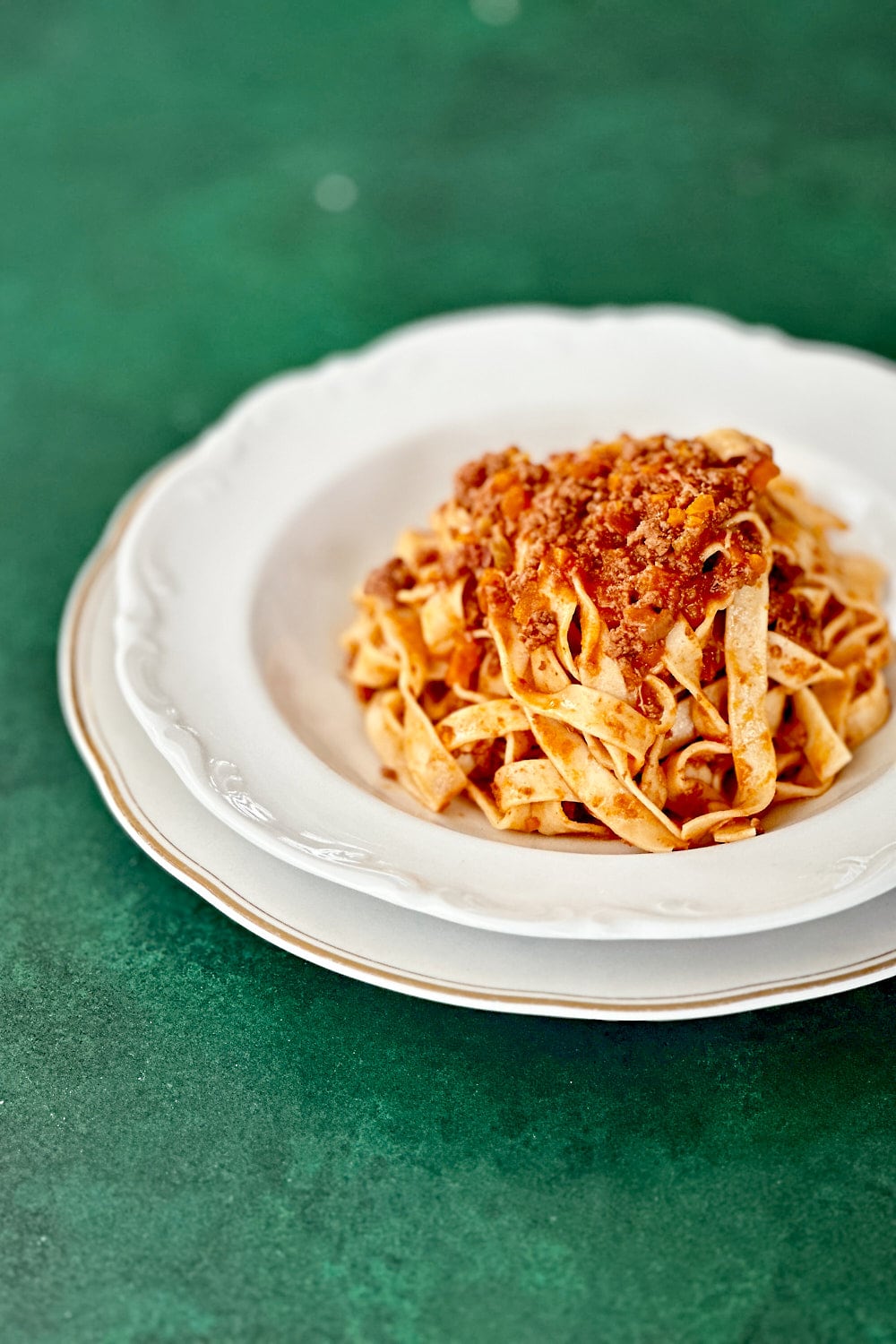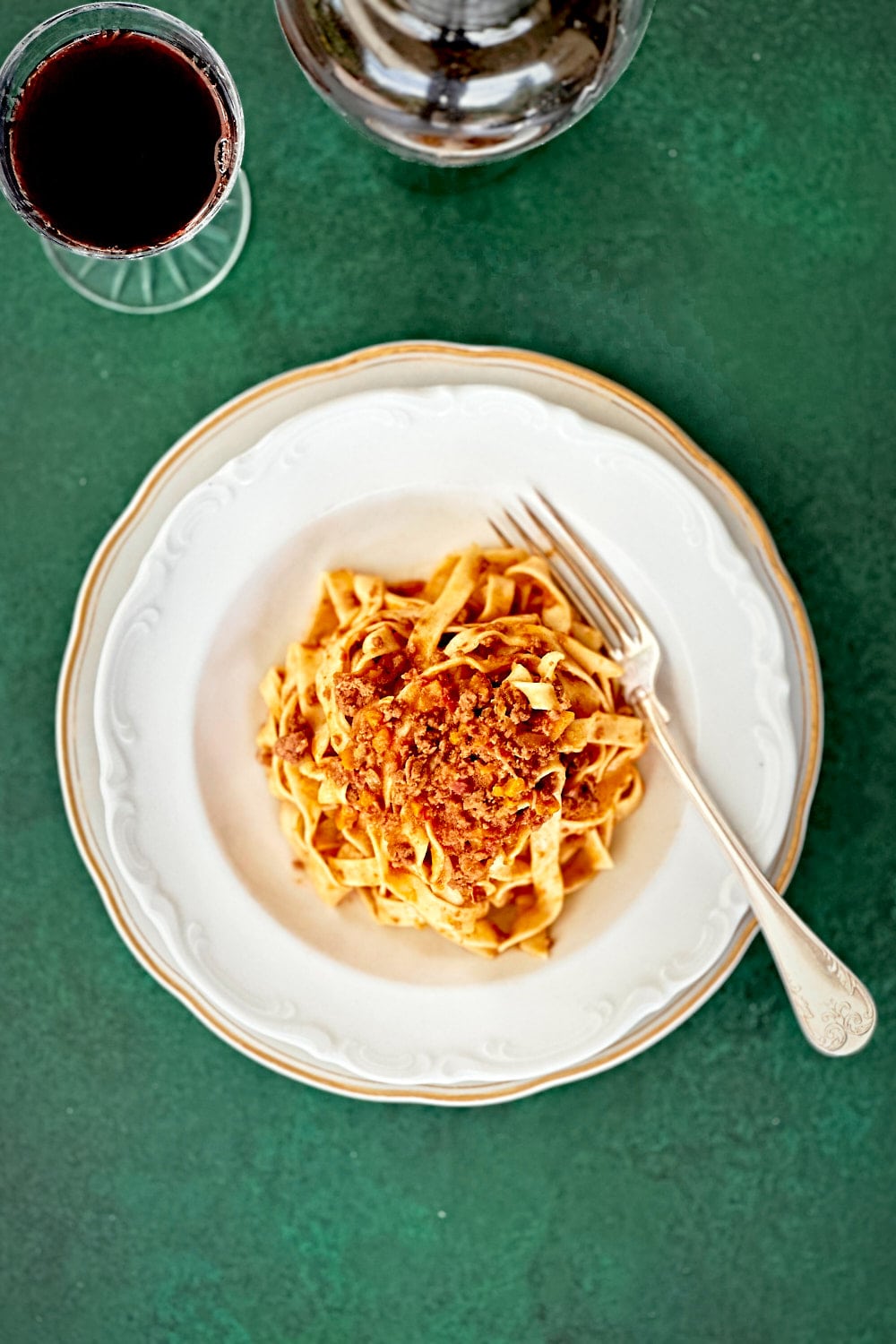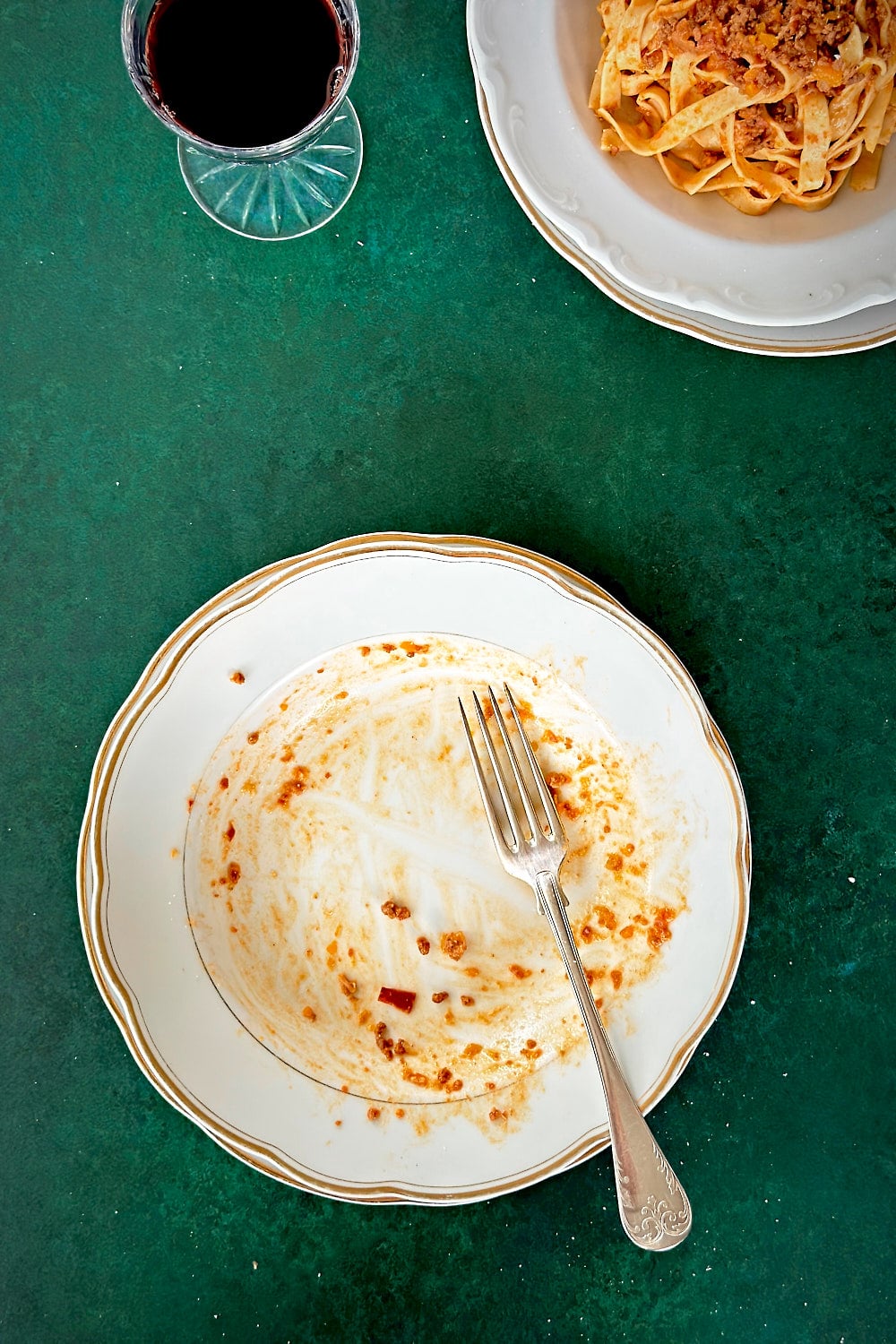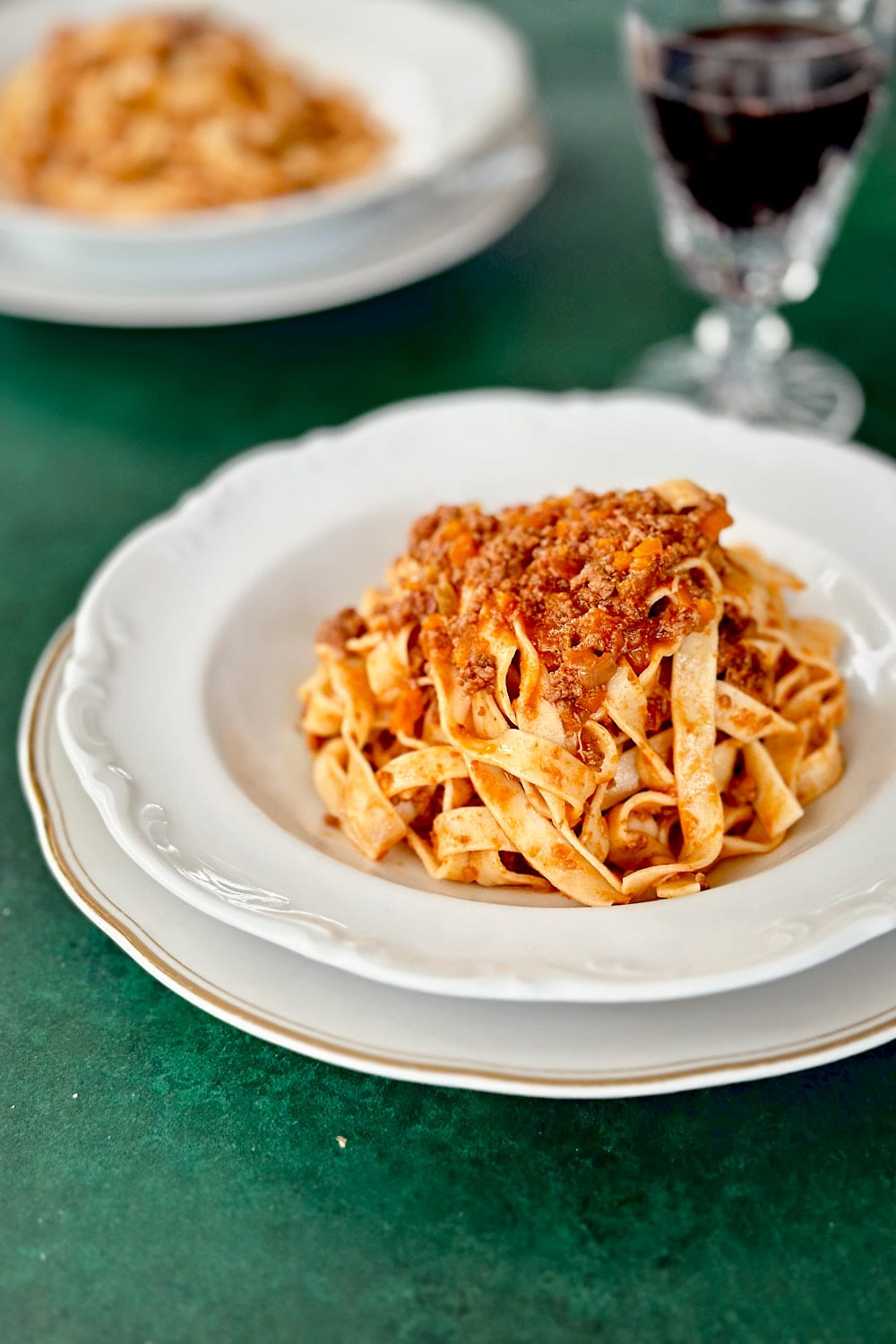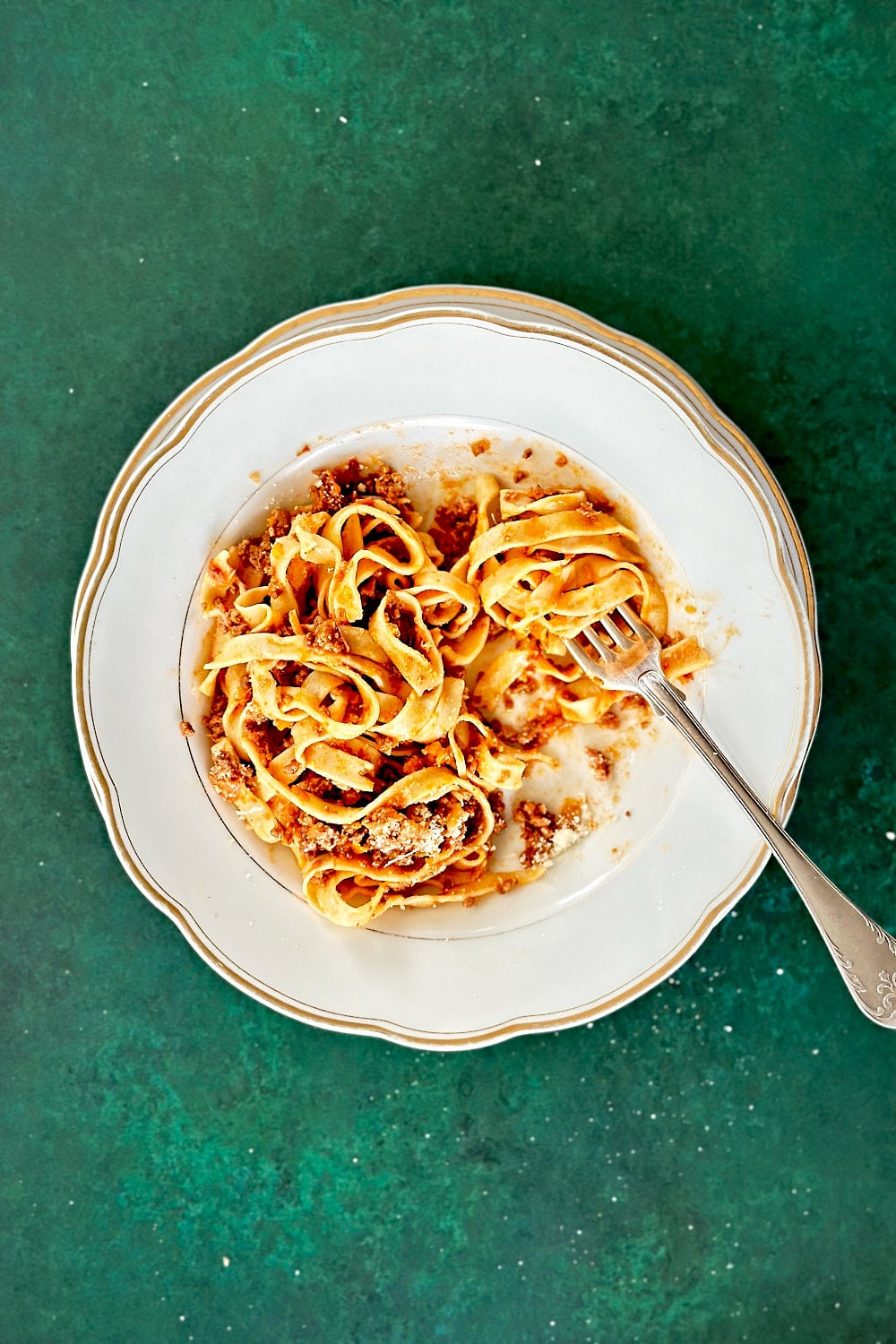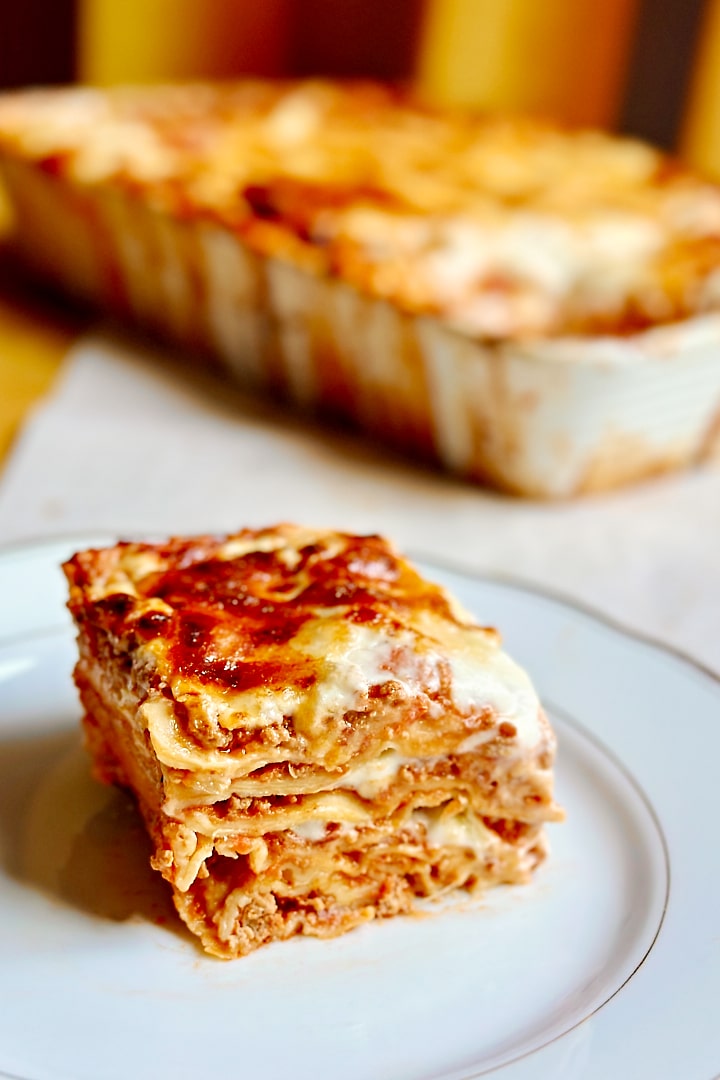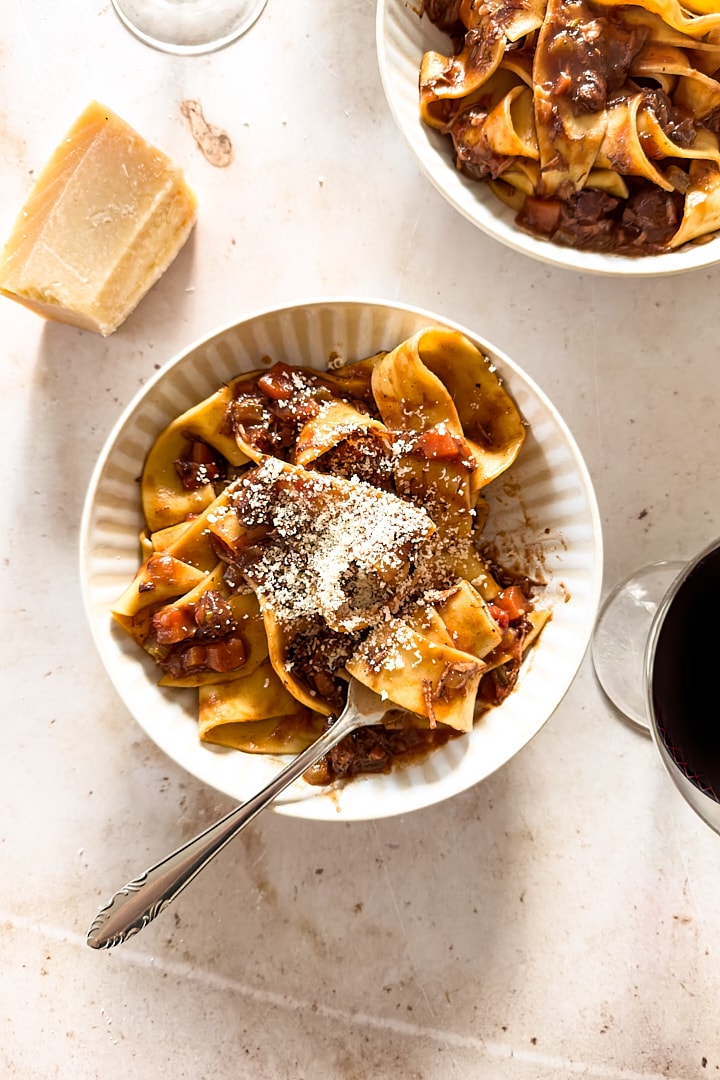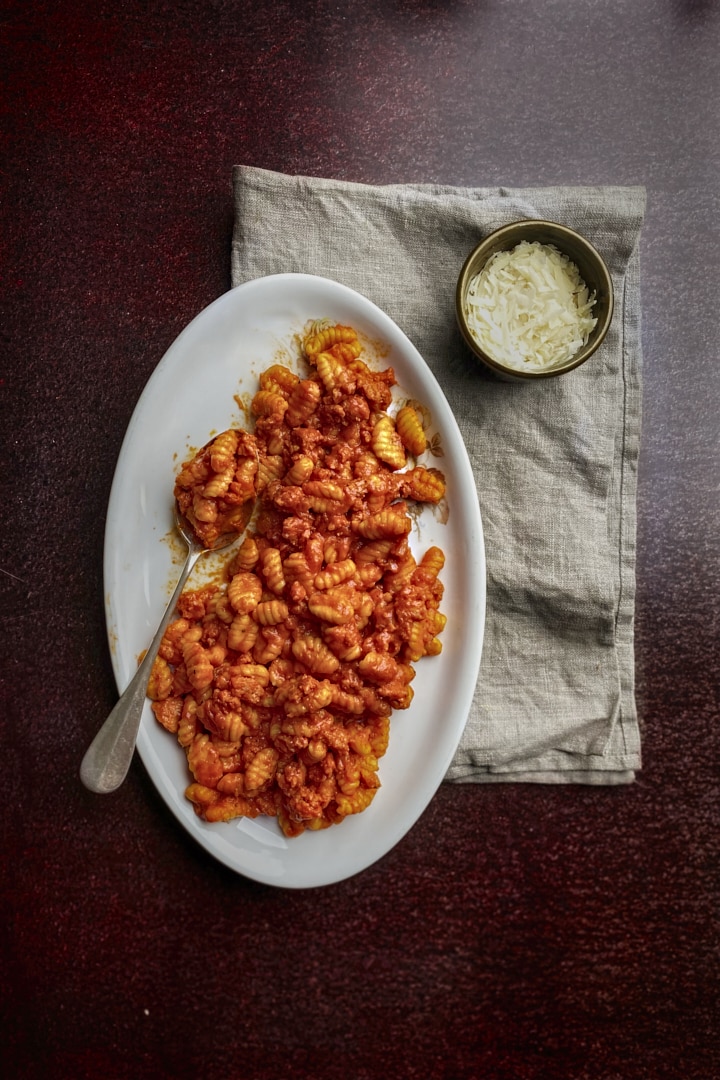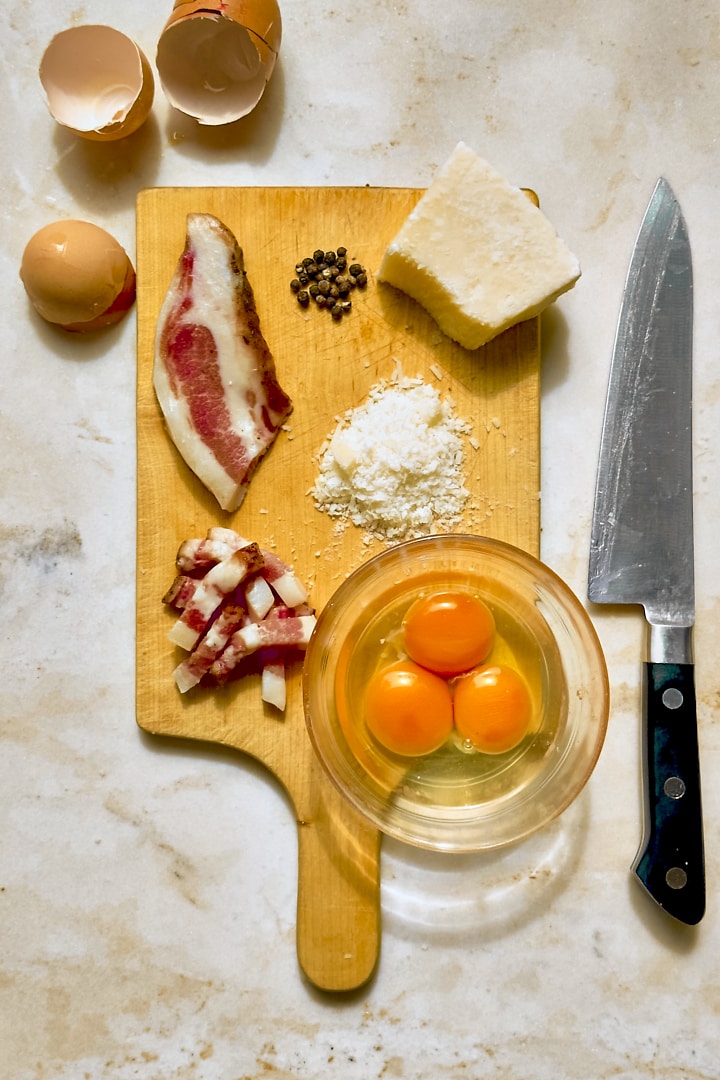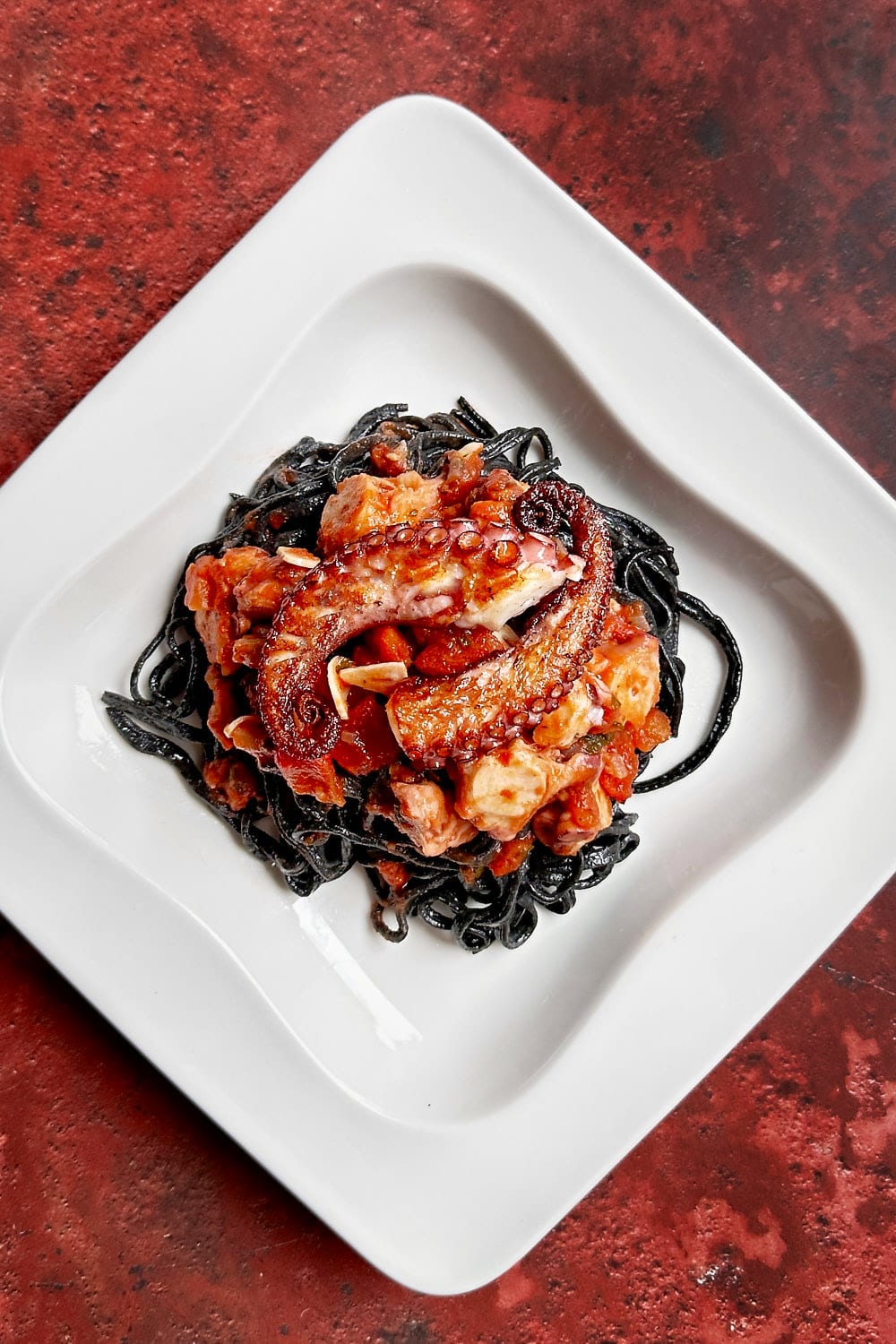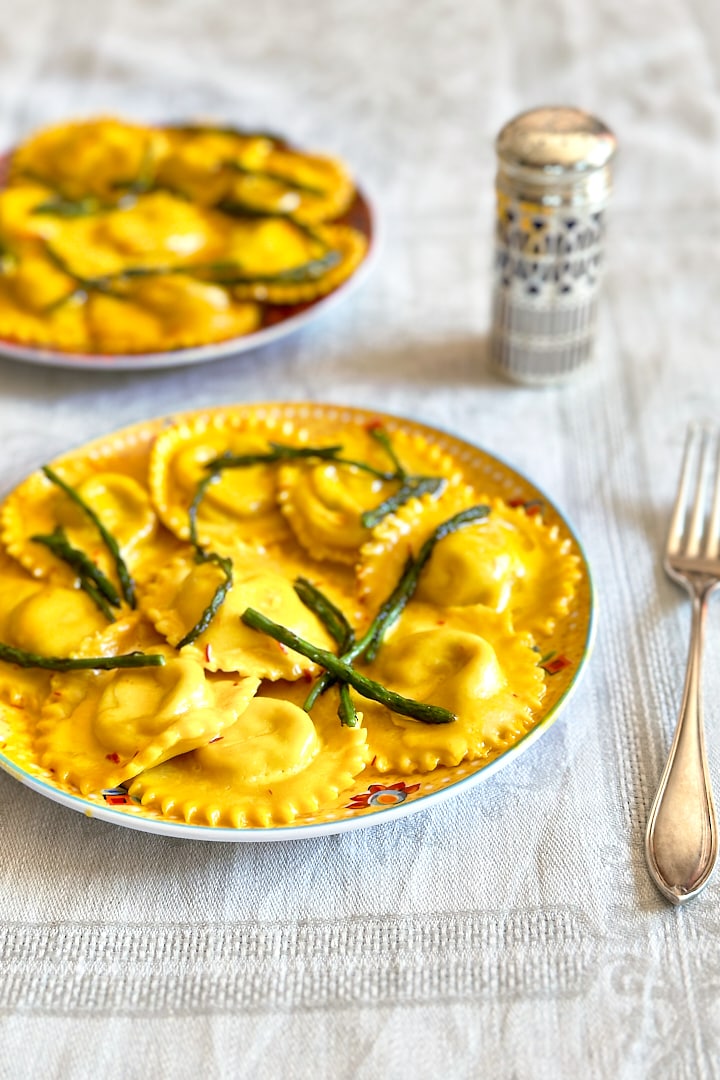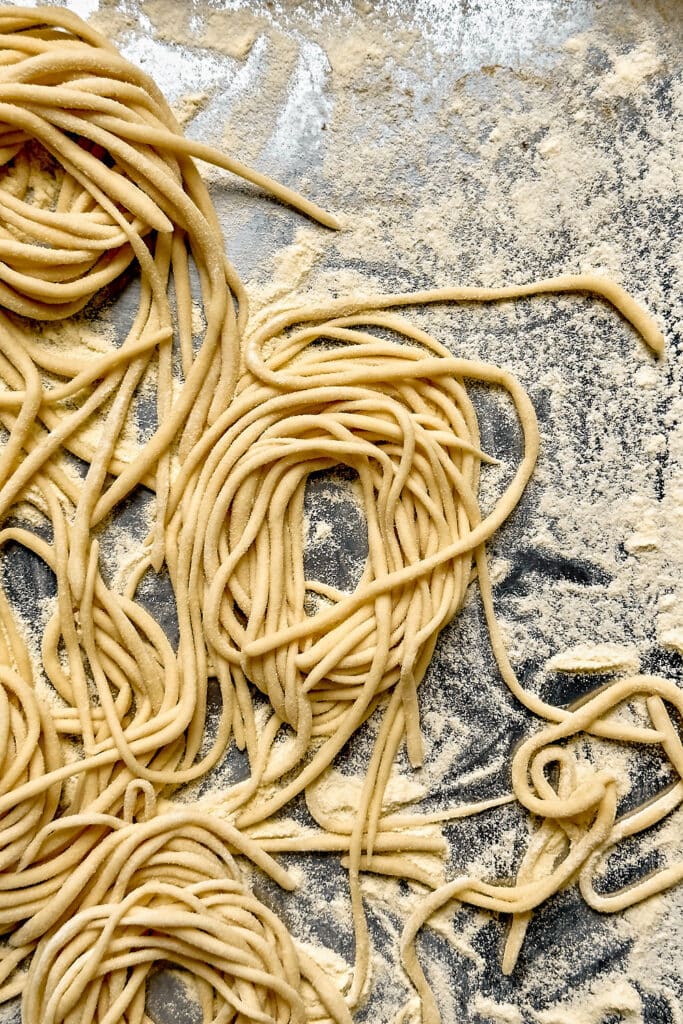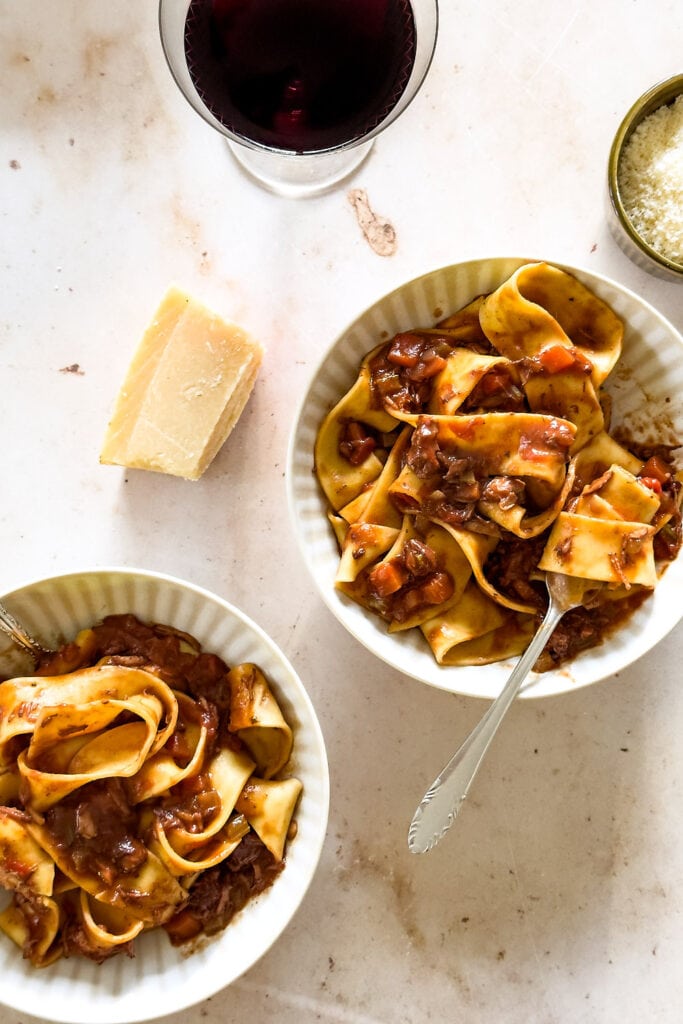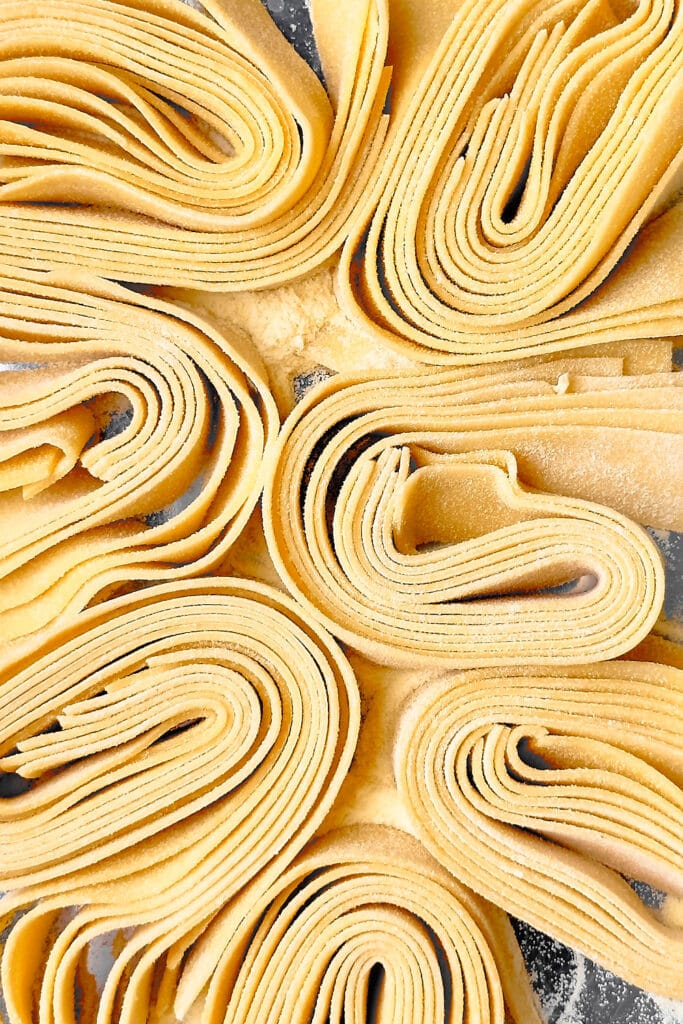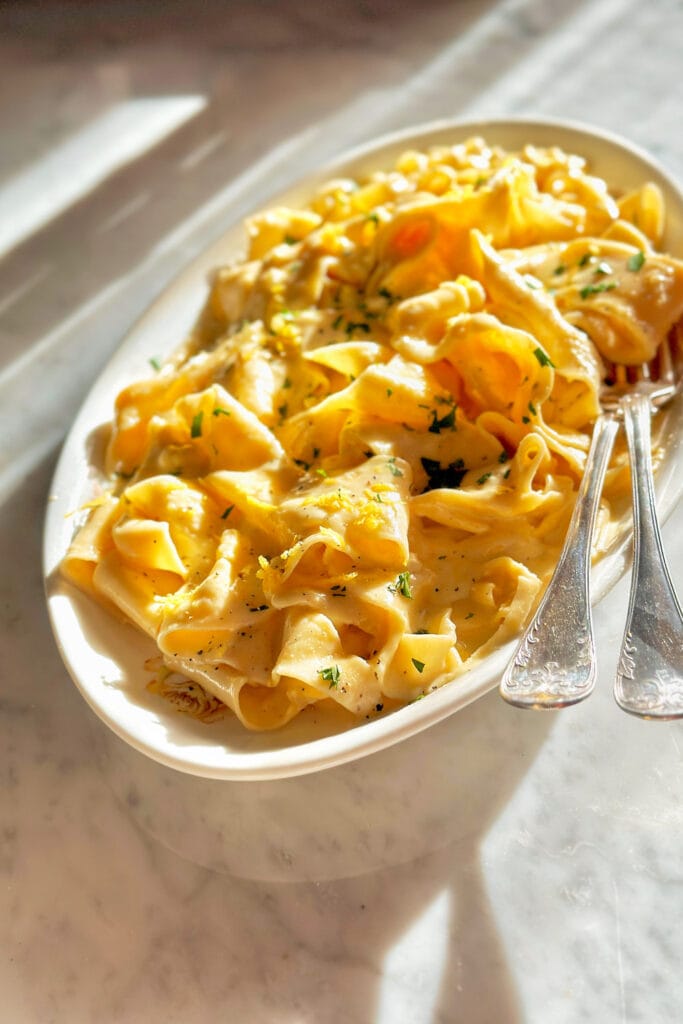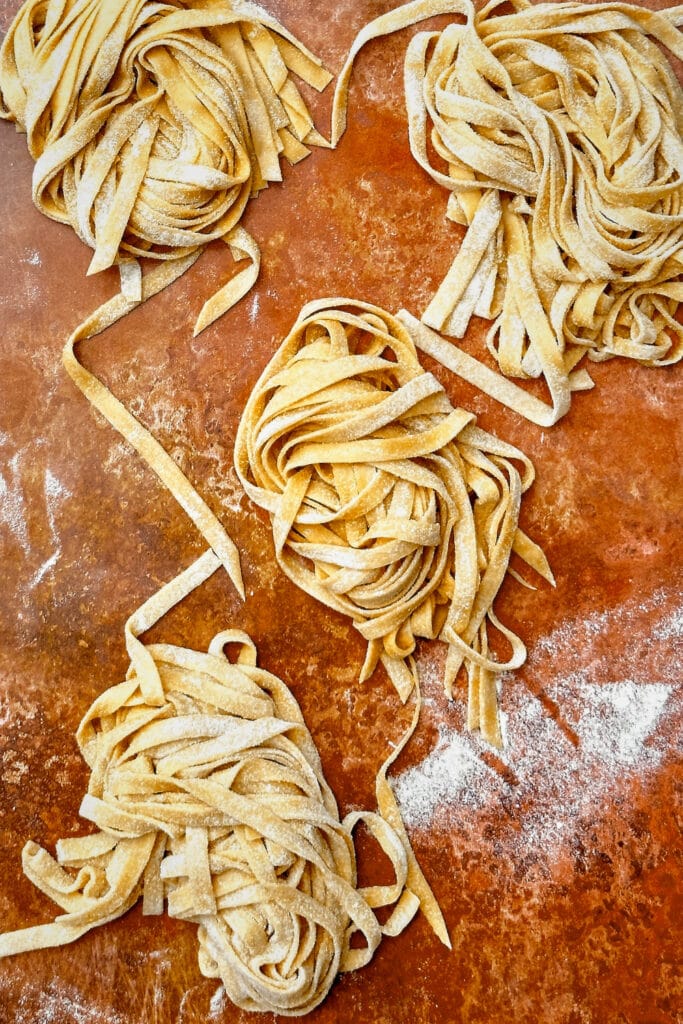Classic Tagliatelle alla Bolognese Recipe
Tagliatelle alla Bolognese is a classic Italian pasta dish that originates from the city of Bologna in the Emilia-Romagna region of Italy. This recipe is made with homemade tagliatelle pasta and a rich beef ragù that’s simmered over low heat for several hours. This slow cooking process allows the flavors to meld and intensify, resulting in a deeply flavorful and hearty sauce.
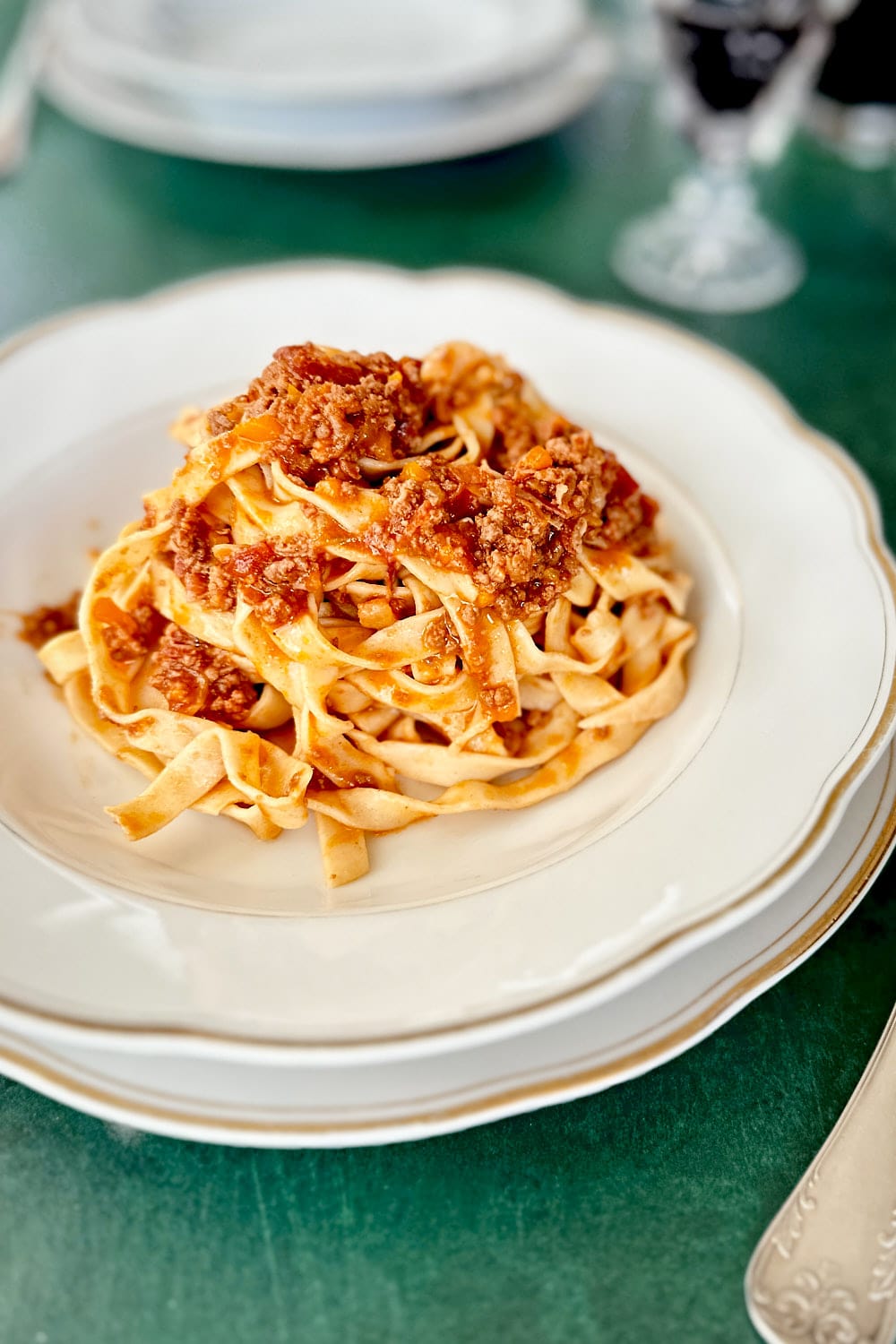
Ingredients You’ll Need
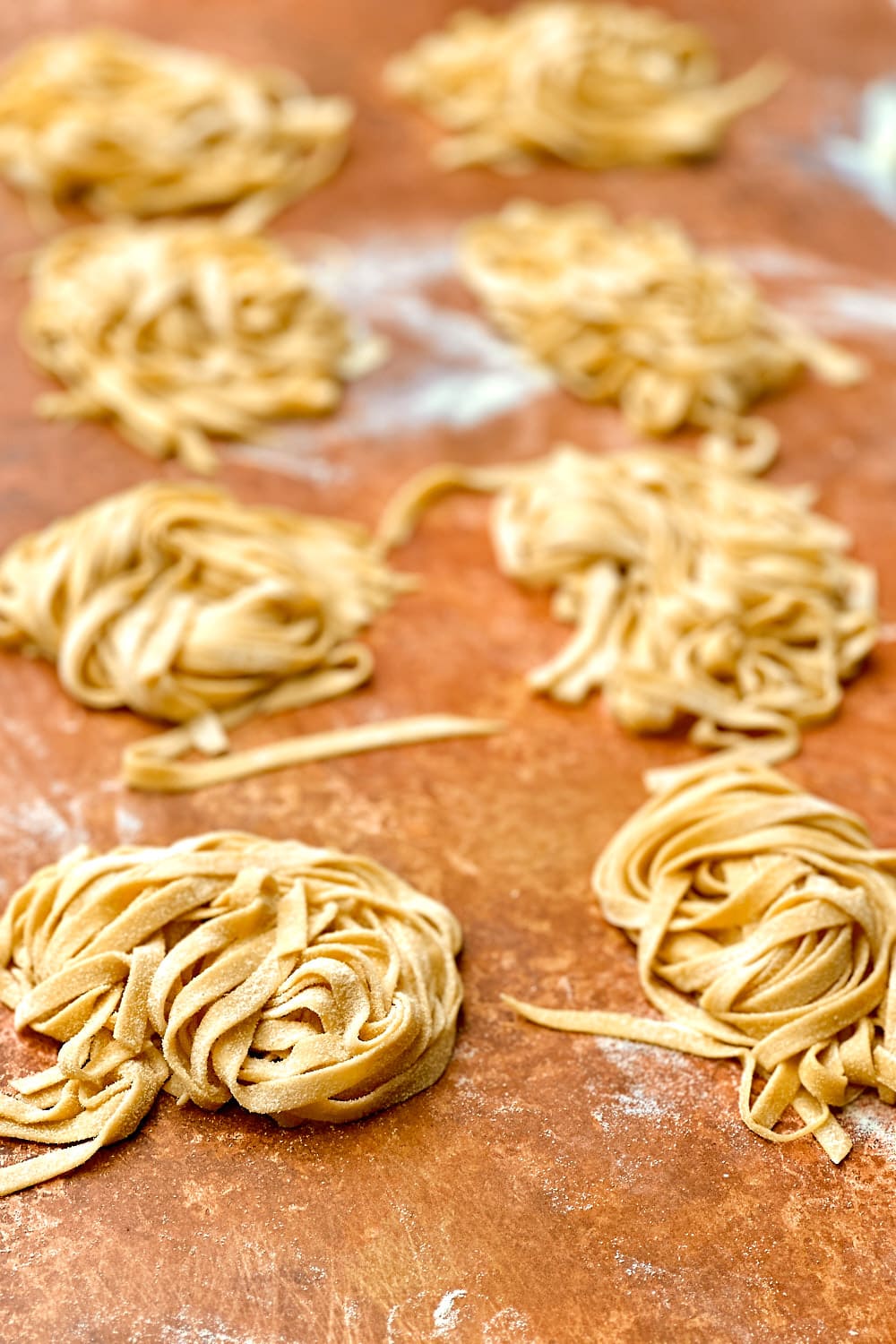
Step-by-Step Instructions to make Tagliatelle alla Bolognese
Step 1
Make the soffritto: Finely chop the onion, celery, and carrots. Heat the olive oil in a large, deep skillet or pot over medium heat. Once the oil is hot, add the vegetables and the tomato paste to the pan and sauté the soffritto for about 10 minutes, stirring occasionally. This step releases the aroma and natural sweetness of the vegetables and builds the flavor base of the sauce. Once the vegetables are soft and tender, remove them from the pan and set them aside on a plate.
Step 2
Cook the meat: Turn the heat up to high and add the pancetta and minced beef. Break the meat up with a wooden spoon and cook for about 5–10 minutes until it’s evenly browned on all sides. Add the soffritto back to the pan and stir to combine. Cook for a couple more minutes, and then deglaze the pan with wine, scraping up the browned bits from the bottom of the pan. Cook until the wine is almost completely reduced.
Step 3
Add the tomato passata and the broth. Season the sauce with salt and pepper. Turn the heat down to low and cover the pot with a lid. Bring the sauce to a gentle simmer and slowly cook the ragù on low heat for about 4 hours, stirring occasionally. This slow cooking process allows all the flavors to meld and results in a rich and deeply flavorful sauce. In case the ragù becomes too thick and dry during the cooking process, you can add a bit more broth or water as needed. The ideal consistency should be rich and creamy, with a velvety texture that coats the back of a spoon. It should not be overly thick like a paste, nor should it be too thin and watery. Towards the end of the cooking time, stir through the milk and continue simmering on low heat without a lid for another 15–20 minutes. Taste the ragù and add more salt to adjust the seasoning, if necessary.
Step 4
Cook the pasta: Bring a large pot of water to a rolling boil and add a generous amount of salt. Cook the tagliatelle in the boiling water until “al dente”. For fresh pasta, this usually only takes about 2 minutes. For dried pasta, make sure to follow the package instructions. Once the pasta is done, drain it with a skimmer or tongs and add it directly to the ragù. Toss and stir to combine until the pasta strands are evenly coated with sauce. Serve the tagliatelle alla Bolognese with freshly grated Parmesan cheese. Enjoy!
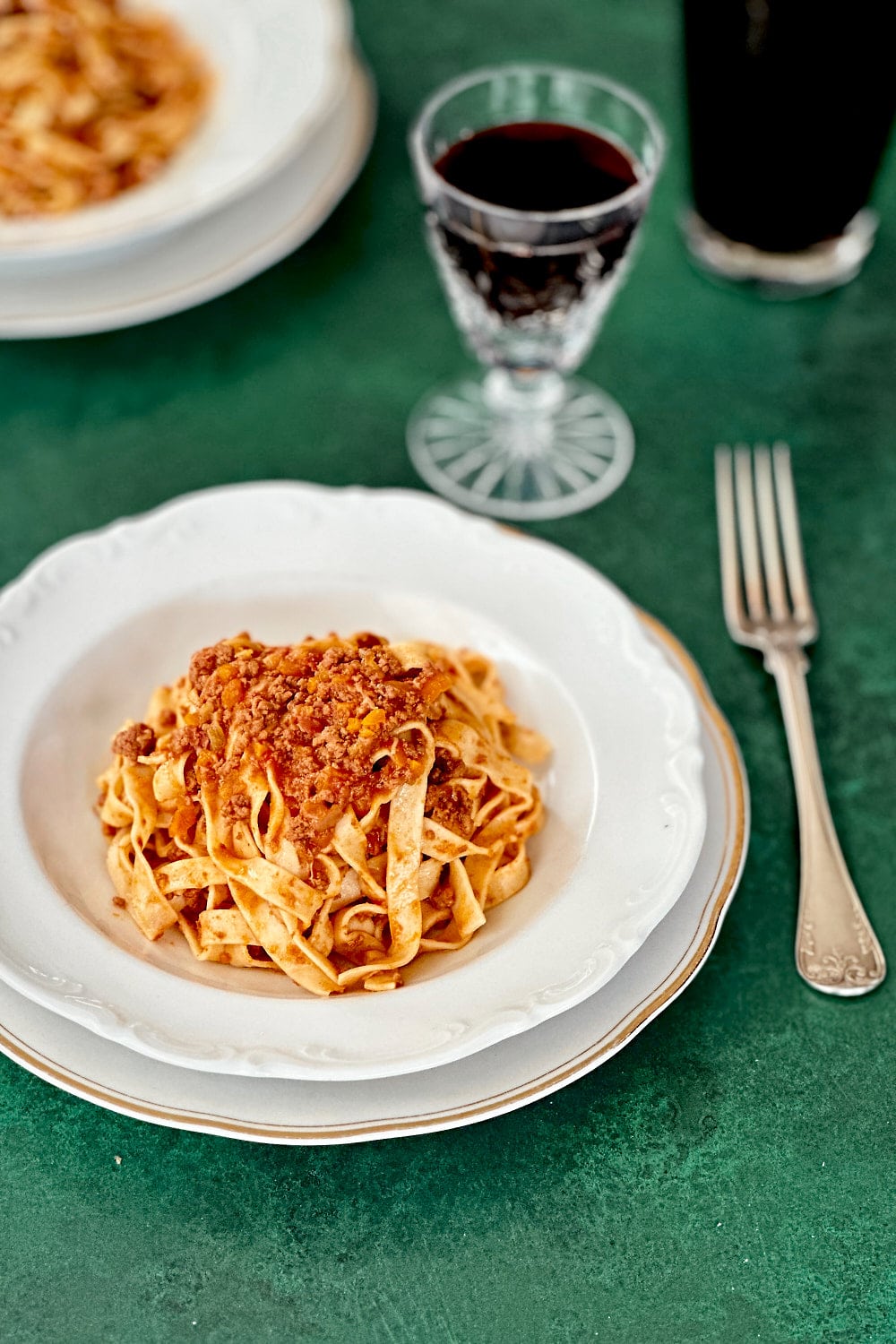
Tips & Tricks
More Pasta Recipes You May Like:
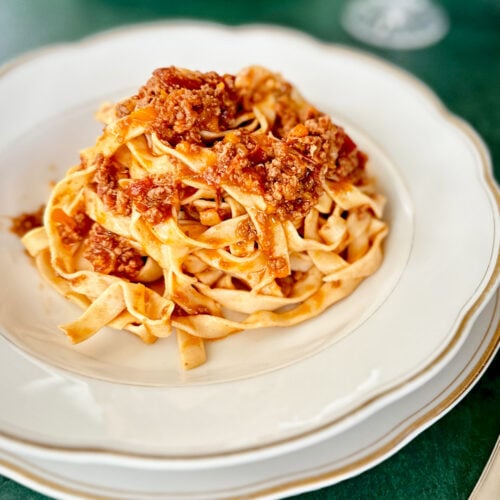
Tagliatelle alla Bolognese
Ingredients
For the ragù alla Bolognese:
- 1 onion – finely chopped
- 1 celery stick – finely chopped
- 2 carrots – peeled and finely chooped
- 4 tbsp olive oil
- 1 tbsp tomato purée
- 100 g pancetta
- 500 g minced beef
- 150 ml wine – red wine or dry white wine
- 250 g tomato passata
- 350 ml beef broth
- 150 ml whole milk
- salt and pepper to taste
- finely grated Parmesan cheese to serve
To serve:
- 600 g fresh tagliatelle pasta OR 400 g dried pasta – to make tagliatelle from scratch, you will need about 400 g of flour and 4 eggs.
Instructions
- Make the soffritto: Finely chop the onion, celery, and carrots. Heat the olive oil in a large, deep skillet or pot over medium heat. Once the oil is hot, add the vegetables and the tomato paste to the pan and sauté the soffritto for about 10 minutes, stirring occasionally. This step releases the aroma and natural sweetness of the vegetables and builds the flavor base of the sauce. Once the vegetables are soft and tender, remove them from the pan and set them aside on a plate.
- Cook the meat: Turn the heat up to high and add the pancetta and minced beef. Break the meat up with a wooden spoon and cook for about 5–10 minutes until it’s evenly browned on all sides. Add the soffritto back to the pan and stir to combine. Cook for a couple more minutes, and then deglaze the pan with wine, scraping up the browned bits from the bottom of the pan. Cook until the wine is almost completely reduced.
- Add the tomato passata and the broth. Season the sauce with salt and pepper. Turn the heat down to low and cover the pot with a lid. Bring the sauce to a gentle simmer and slowly cook the ragù on low heat for about 4 hours, stirring occasionally. This slow cooking process allows all the flavors to meld and results in a rich and deeply flavorful sauce. In case the ragù becomes too thick and dry during the cooking process, you can add a bit more broth or water as needed. The ideal consistency should be rich and creamy, with a velvety texture that coats the back of a spoon. It should not be overly thick like a paste, nor should it be too thin and watery. Towards the end of the cooking time, stir through the milk and continue simmering on low heat without a lid for another 15–20 minutes. Taste the ragù and add more salt to adjust the seasoning, if necessary.
- Cook the pasta: Bring a large pot of water to a rolling boil and add a generous amount of salt. Cook the tagliatelle in the boiling water until “al dente”. For fresh pasta, this usually only takes about 2 minutes. For dried pasta, make sure to follow the package instructions. Once the pasta is done, drain it with a skimmer or tongs and add it directly to the ragù. Toss and stir to combine until the pasta strands are evenly coated with sauce. Serve the tagliatelle alla Bolognese with freshly grated Parmesan cheese. Enjoy!

